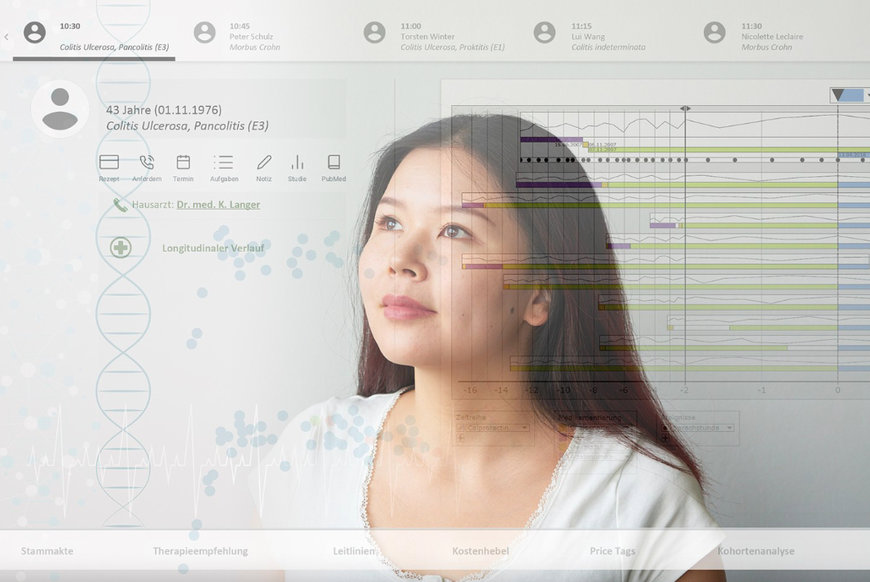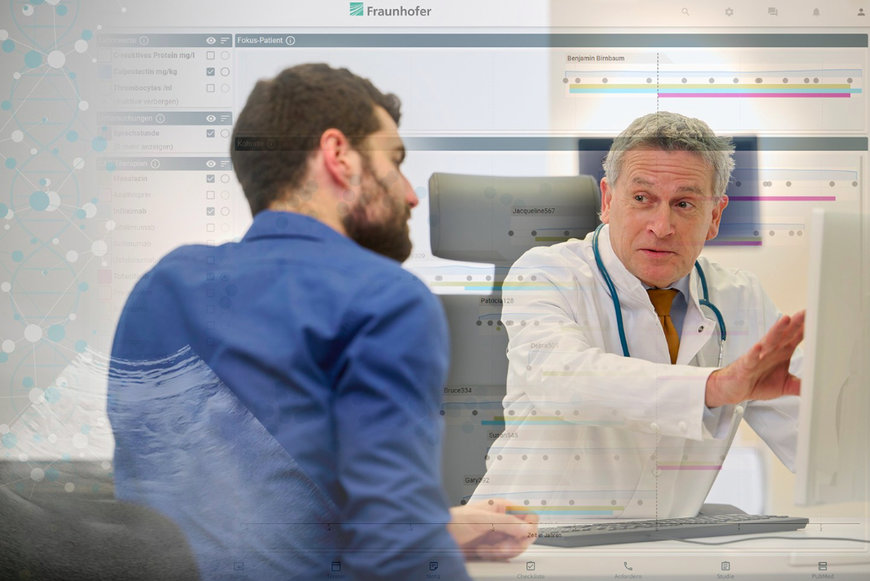www.medical-devices.tech
04
'23
Written on Modified on
Fraunhofer News
DIGITAL PATIENT MODEL AT FRAUNHOFER SUPPORTS TREATING PHYSICIANS IN MAKING DECISIONS AND REDUCING COSTS
The support system for decision-making developed as part of the MED²ICIN project will increase the treatment success rate.

The digital patient model enables personalized and cost-effective treatment, opening up new opportunities for the healthcare sector. It will be used to merge existing patient data from different systems to form a digital twin. “It offers advantages for the specific treatment of individual patients as well as for the use of healthcare funds for society as a whole,” says Dr. Stefan Wesarg, Head of the Competence Center Visual Healthcare Technologies at the Fraunhofer Institute for Computer Graphics Research IGD and coordinator of MED²ICIN. “Aggregating an individual’s health and sickness records and intelligently analyzing this data in a way that complies with data protection regulations will result in a completely new solution for more effective prevention, diagnostics, treatment and care.”
Reducing costs and the burden on medical experts
Effectively controlling healthcare expenditures — i.e., avoiding multiple requests for expensive MRI scans or minimizing the amount of manual work involved in evaluating imaging data — means taking into account the biggest economic challenges that we are currently facing in the healthcare sector. These include rising costs and the enormous skills shortage and the resulting bottleneck for care.
Wesarg and his team worked alongside six other Fraunhofer institutes to develop the digital twin. While the information and recommendations are summarized in an interactive dashboard, a more detailed overview is offered through a variety of modules. Here, physicians can access AI-based analyses (e.g., of medical specialist publications) and check the guidelines for treatment as well as the costs of each treatment option. In the cohort module, the individual patient records are matched up to data from similar disease patterns. As such, the treating physicians can identify which treatments would be most effective in each specific case. Patients can upload their own lifestyle data via an app.
Decision model showed promising results in practical testing
An online survey of almost 50 gastroenterologists who tested the web-based system at hospitals and medical practices showed that the patient model was able to fulfil the set objectives. While 23% of those surveyed praised the cost savings, 35% pointed out the decrease in treatment times that resulted from using the model. So far, the digital patient model has been used for chronic inflammatory bowel diseases (CIBD); in the future, it will be used for other disorders.
Dr. Irina Blumenstein, a senior physician at Frankfurt University Hospital, was involved in the development process right from the start as a CIBD expert. “The tool provides excellent support to both experts and less experienced gastroenterologists in day-to-day treatment,” says the specialist in internal medicine, gastroenterology and nutritional medicine.

Further development will lay the foundation for wide-scale use
Wesarg and his team will continue to advance their research at the European level with the help of partners from Finland. Using 10,000 sets of patient data, they will continue to develop the model so that it can be incorporated into commercial systems and used in day-to-day medical care. “Ultimately, it is a human being who makes the decision — by using our patient model with its AI-supported modules, they will have the optimum data basis at their disposal to do so,” explains Wesarg.


